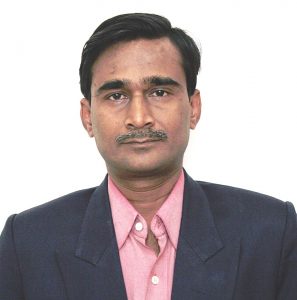 By Nageshwar Patnaik in Bhubaneswar, April 24, 2020: The most used word in the aftermath of Coronavirus (Covid-19) pandemic has been social distancing, a term that has seen more than 100-fold rise in Google searches. Along with it, words like isolation, quarantine, containment etc are in huge circulation.
By Nageshwar Patnaik in Bhubaneswar, April 24, 2020: The most used word in the aftermath of Coronavirus (Covid-19) pandemic has been social distancing, a term that has seen more than 100-fold rise in Google searches. Along with it, words like isolation, quarantine, containment etc are in huge circulation.
These words essentially involve not mixing with people, confining to four boundaries of home except going out to pick up essentials. But some experts strongly oppose the use of social distancing. They point out that we cannot distance from each other socially.
Dr Vikram Patel, one of the world’s foremost experts on mental health and the Pershing Square Professor of Global Health at the Department of Global Health and Social Medicine, Harvard Medical School in a recent interview asserted, “The word ‘social distancing’ itself was poorly chosen; what should have been emphasized is physical distancing and, that too, primarily with regards to protecting older people and those with underlying medical conditions. We should never be distancing from one another socially.”
Many experts prefer ‘physical distancing’ to ‘social distancing’ saying that the term is misleading and that its widespread usage could be counterproductive. In fact, having seen the limitations of using the term “social distancing” even in the West, the World Health Organization (WHO) has suggested that it be replaced with “physical distance, social unity”. In fact, the WHO has started using ‘physical distancing’ since mid-March.
The deadly virus is transmitted through respiratory droplets and contact routes, according to the WHO. COVID-19 spreads mainly among people who are in close contact (within about 6 feet) for a prolonged period. The virus spreads when an infected person coughs, sneezes, or talks, and droplets from their mouth or nose are launched into the air and land in the mouths or noses of people nearby. The droplets can also be inhaled into the lungs. Recent studies indicate that people who are infected but do not have symptoms also spread COVID-19 virus.
 Keeping it in view, the governments across the world have opted for social distancing nay physical distancing. This involves not mixing with people — for work or play — not going out of our houses except for essentials and throwing life as we knew it out of the window so that hospitals are not inundated with coronavirus cases.
Keeping it in view, the governments across the world have opted for social distancing nay physical distancing. This involves not mixing with people — for work or play — not going out of our houses except for essentials and throwing life as we knew it out of the window so that hospitals are not inundated with coronavirus cases.
Social distancing is a known and much abused word in the Indian society. Though the virus knows no caste or creed, but the use of the word ‘social distancing’ is feeding existing social prejudices. India has gone into lockdown in the first phase for three weeks and extended for further 19 days in second phase till May 4 to tackle the coronavirus pandemic. The aim is to minimise contact between people as “social distancing” is the most effective way to contain the spread of the highly contagious virus.
Prime Minister Narendra Modi categorically underlined that there “is no other way to escape” the pandemic than social distancing. But the ongoing attempts of using the world ‘social distancing’ as a justification for the caste system need to be addressed forthwith.
In our society, the word ‘social distancing’ is easily misinterpreted to mean distancing based on social differences. Social distancing in a deeply fragmented society in our country like India is both vertical– along caste lines, and horizontal, involving the separation of people within the same groups. India’s already entrenched hierarchies of power meant vertical distancing was quickly introduced.
But horizontal social distancing has posed as a much bigger problem. What is most worrying is that a section of social media has equated social distancing with caste practices that have afflicted social relations in India for centuries. India has a history of oppressive notions of purity and pollution which resulted in the practice of untouchability.
When these practices started to crack in the nineteenth century, there were similar attempts of “justifying” caste atrocities in the name of hygiene. But such attempts were quickly suppressed by the reform movement and the present market system.
 Dr. B.R. Ambedkar in his noteworthy essay Castes in India said, it was the Brahmins who formed the first group of people who “enclosed” themselves – or, socially ‘distanced’ themselves from others around them.
Dr. B.R. Ambedkar in his noteworthy essay Castes in India said, it was the Brahmins who formed the first group of people who “enclosed” themselves – or, socially ‘distanced’ themselves from others around them.
“At some time in the history of the Hindus, the priestly class socially detached itself from the rest of the body of people and through a closed-door policy became a caste by itself,” Ambedkar says in the essay.
The castes were part of a “graded hierarchy,” according to Ambedkar. An attempt was made to institutionalize and proclaim social distance, which even found its place in sacred texts and later on practiced without stop.
The way castes spread and multiply curiously resembles the proliferation of some viral pandemic: “Now apply the same logic to the Hindu society and you have another explanation of the ‘fissiparous’ character of caste, as a consequence of the virtue of self-duplication that is inherent in it.”
The social distancing resulted in untouchability in India for centuries. Caste, like a virus, has the “virtue of self-duplication…inherent in it,” Ambedkar rightly observes. “It is not a case of social separation, a mere stoppage of social intercourse for a temporary period. It is a case of territorial segregation and of a cordon sanitaire putting the impure people inside a barbed wire into a sort of a cage. Every Hindu village has a ghetto. The Hindus live in the village and the Untouchables in the ghetto.”
Untouchability is constitutionally abolished thanks to the protracted battle raised by Ambedkar and Mahatma Gandhi. In a fitting tribute to these two legends, the Modi government must replace social distancing with physical distancing as the WHO has done few weeks back to stall the social virus’s entry into our society.


Leave a Reply
Be the First to Comment!